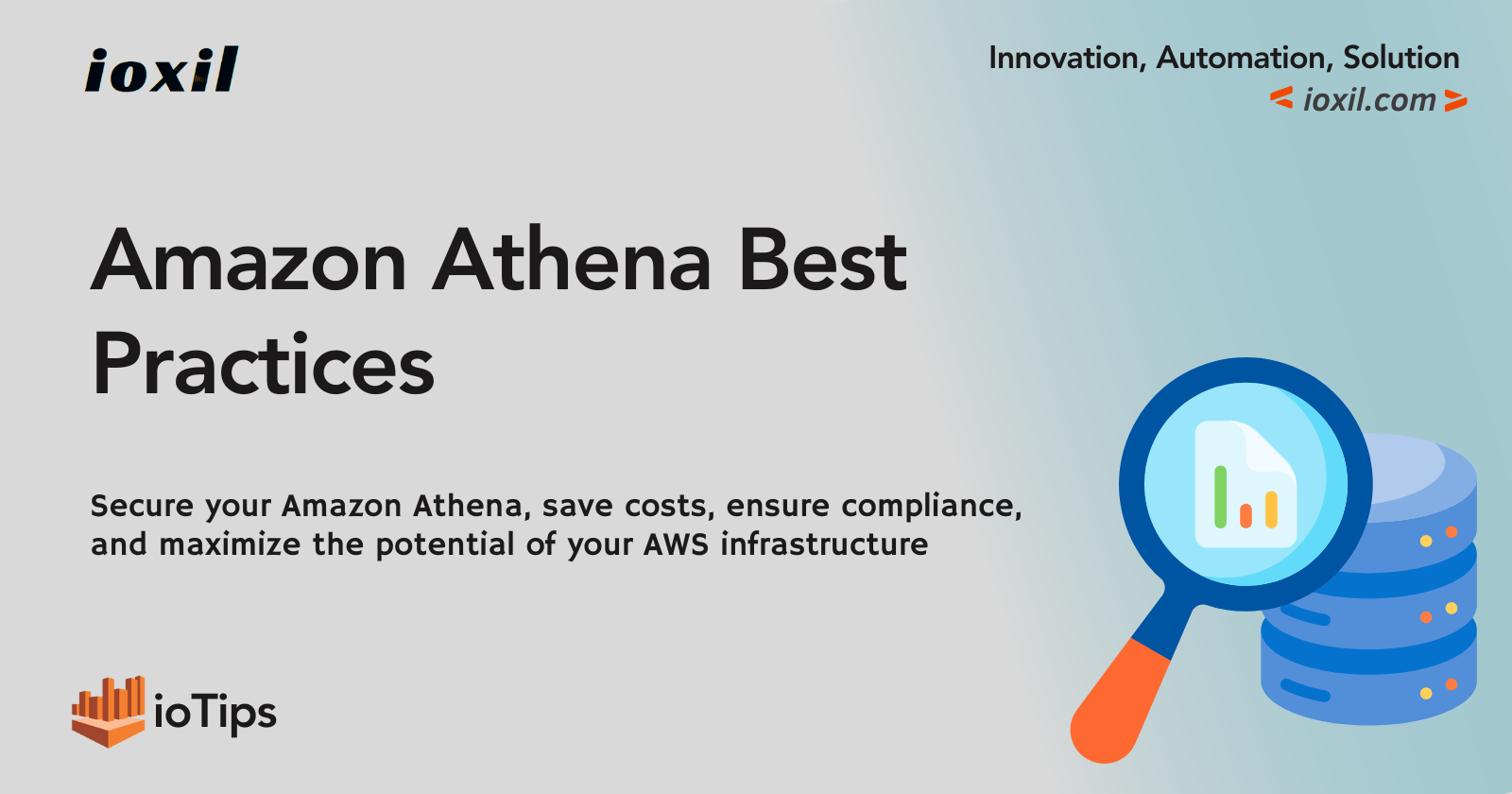ioTips: Best Practices for Amazon Athena
 Umair
Umair
Amazon Athena is a fully managed, serverless, and interactive query service that enables users to analyze data in Amazon S3 using standard SQL. This guide outlines best practices for using Athena, focusing on key areas such as security, performance, efficiency, data organization, cost optimization, and compliance.
Security
Assign least privilege IAM roles for query control.
Protect Data Lake by limiting Athena's access.
Use Athena's workgroup feature for user access control.
Performance
Partition data in Amazon S3 for faster queries.
Optimize the number of concurrent queries.
Use columnar compression formats like Parquet or ORC.
Efficiency
Use workgroups for workload separation and cost control.
Cancel long-running queries to save resources.
Optimize SQL queries for efficient resource utilization.
Data Organization
Use AWS Glue Data Catalog for data organization.
Use Athena's metadata caching for faster queries.
Manage schema evolution to accommodate data structure changes.
Cost Optimization
Understand the data scanned by Athena to manage costs.
Use columnar storage formats to lower costs.
Set the query result location in each workgroup for cost management.
Compliance
Implement data governance practices for data reliability and security.
Enable AWS CloudTrail logs for Athena for compliance.
Ensure Athena's environment complies with relevant laws, regulations, and standards.
Amazon Athena provides a flexible, secure, and cost-effective solution for querying large datasets. By implementing the best practices outlined in this guide, users can improve query performance, enhance security, optimize costs, and ensure compliance. Read the full version of this article on ioTips: AWS Athena Best Practice.
Subscribe to my newsletter
Read articles from Umair directly inside your inbox. Subscribe to the newsletter, and don't miss out.
Written by

Umair
Umair
AWS Certified Security Specialist, highly motivated result-oriented DevSecOps and Cloud Solution Architect with comprehensive hands-on experience in Digital Transformation, DevOps, CI/CD, designing and implementing highly scalable architectures and infrastructure for end-to-end solutions. A positive and multi-skilled character with a proven ability to successfully deliver high-quality solutions with the good use of personal initiatives, very often in complex and challenging customer environments.